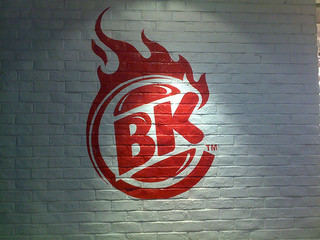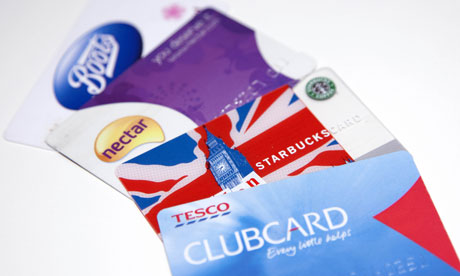
When we work on marketing or shopper marketing projects with clients, we always start at the same point. Whether the challenge is with in-store marketing, trade terms or channel strategy, the starting point is to really understanding future sources of growth, and to do this we need to identify which consumers (and then which shoppers) represent the largest growth opportunities. I am eternally amazed how difficult this question on quantifying consumption opportunities is for marketing teams to answer (which is why, at engage, we help lots of clients do exactly this!), but it seems that too often marketers get confused with some of the basic fundamentals of their jobs. They get caught up in loyalty and likes; in awareness and preference, and forget that their true purpose is to drive profitable revenue for the company.
I was reminded of this when I found this fascinating case study from Burger King Norway – the “Whopper Sellout”. Burger King, it appears, have discovered what pretty much everyone knows – that most Facebook ‘likes’ don’t really signify anything, and they decided to do something about it. In simple terms they offered their ‘fans’ an incentive to leave: they offered them a free Big Mac. The only catch was that, if they accepted the free burger, they were banned from Burger King’s Facebook page forever.
The results will not surprise anyone. Of Burger Kings’ 38,000 Norwegian ‘fans’ fully 30,000 took the free Big Mac, whilst 8,000 spurned the offer and stayed on the Burger King site. The first lesson, that most Facebook “fans” are in fact anything but that, is hardly earth shattering. But whilst I’m not going to assess the efficacy of this campaign – after all I’m not clear on what the objectives were – I believe there are a number of important lessons for all marketers to learn from this.
Marketers overvalue social media ‘likes’
The lesson that Burger King learned, and many other marketers still need to, is that the value of a ‘like’ on your company’s page is proportionate to the cost of liking it in the first place. Liking on Facebook is cost-free – and therefore it is worth little. Any marketers who are still deluding themselves that these have much value really need to take a long hard look at themselves.
What was won and what was lost?
Whilst Burger King have now identified and ring-fenced 8,000 ‘loyal’ fans, they have potentially alienated 30,000 other users. Not only that, but they have actively encouraged those users to try their competitors’ product; experience their stores, live in their brands. Whilst the idea is brave, is it really necessary to take the 30,000 and push them into your competitors’ arms quite so forcibly? There is a danger that whilst Burger King may now be able to ring fence their loyalists better, they have given more value to their competitor than they will ever glean. Whether this is true or not depends on two critical questions…
How valuable are the non-loyalists?
Over simplifying a little, but whilst Burger King have now identified 8,000 loyalists (who, remember, they already had), McDonald’s have had the opportunity to welcome four times as many to their brand. Which group is most valuable? There are a lot more of the latter. Which ones eat most burgers? Nobody knows. Which group represents the biggest growth opportunity? Nobody knows. And Burger King are unlikely to find out, now that they have cut off communications.
How valuable are the loyalists?
It appears that sometimes marketers mistake loyalty with revenue. Don’t get me wrong, loyal consumers and shoppers are valuable and desirable. But in my experience it is the creation of loyalists that creates sustainable brand growth, not the retention. I hope that Burger King’s marketers have quantified the consumption opportunities that this group represents, and are thus confident that they have the tools to nurture significant growth from this tiny minority of burger eaters; otherwise they may regret the day that they turned their backs on a much larger group.
A triumph of efficiency over effectiveness?
One area where Burger King must surely be applauded is in the fact that it recognize that many of their Facebook fans are only there for the deals and the free stuff, and should not be considered when quantifying consumption opportunity. Kudos to Burger King for trying to do something to weed out the free loaders. In any environment where discounts are available, there are a group of deal seekers who will suck up much of the investment, without yielding much benefit. If Burger King has managed to jettison these, then kudos to them.
Pareto was right
Burger King jettisoned 80% of the fans and got the engagement rate to increase by a factor of five. The top 20% of the population was indeed most valuable, and probably responsible for most of the engagement before the “whopper Sellout”. Not a major learning, but just interesting that the old 80:20 rule still seems to play out in the digital world!
I have no idea whether this was a successful campaign, a good idea gone bad, or a bad idea from the beginning. However it is a clear illustration of the danger of muddling up loyalty and revenue. If Burger King has done its math, and know that the loyal 8,000 are the most valuable consumers now and in the future, then this is a masterpiece in smart marketing. If they didn’t know that (and I suspect that they didn’t) then this feels like a dangerous punt (or stunt!) which has at least as many downsides as upsides. Any marketer who goes into a campaign which so obviously targets one group at the expense of another had better have gotten their math straight first.
It’s an interesting case with many nuances. What are your views? Was this a PR masterpiece, a social triumph or a brave campaign that should have been killed on the drawing board? Let me know what you think in the comments section below.
Image courtesy of Flickr user bfishadow




